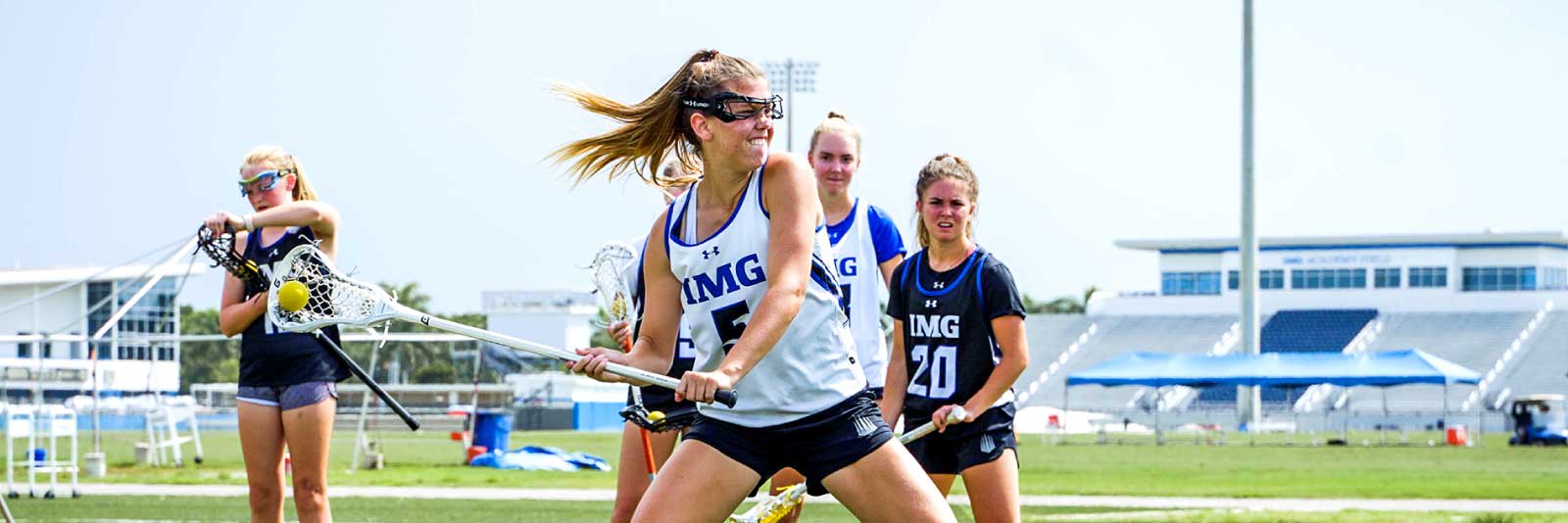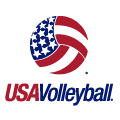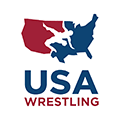2023–24 NCAA Women’s Lacrosse Recruiting Rules and Calendar

College lacrosse coaches are held to the strictest recruiting rules of any NCAA sport regarding communication. Contact is no longer permitted between student-athletes and college coaches until September 1 of the athlete’s junior year. While the NCAA has strict recruiting rules for Division 1 sports, some divisions have less restrictive recruiting rules that allow coaches to contact athletes earlier. This section is designed to guide student-athletes and their families through the NCAA lacrosse recruiting rules and calendar, as well as the rules and calendar for the NAIA.
Quick Links
How to use the NCAA lacrosse recruiting rules and calendar
One way that NCSA aims to reduce the stress around the college recruiting process is by breaking down the NCAA lacrosse recruiting calendar and rules in a way that’s easy to understand. This section focuses on the recruiting rules and regulations that student-athletes and college coaches must follow under both the NCAA and NAIA. This section looks at the recruiting timeline, new lacrosse recruiting rules, early recruitment and the NCAA recruiting calendar.
When does the women’s lacrosse recruiting process start? When can college coaches contact players?
NCAA Division 1 coaches are free to contact recruits after September 1 of the athlete’s junior year. College coaches can send digital communication, make phone calls, send recruiting materials and make verbal offers to recruits. Communication is permitted as early as June 15 after the athlete’s sophomore year for Division II college coaches. Beginning September 1, student-athletes can begin contacting college coaches and scheduling official and unofficial visits.
While official contact with college coaches won’t begin until September 1 of Junior year, there is a lot that prospects should be doing to prepare for that date. Getting on the radar of college coaches and letting them know you are interested is up to the student-athlete. Student-athletes will need to create a strong recruiting profile, capture and edit a quality highlights video and research potential schools prior to the start of the recruiting process. Student-athletes who prepare for the recruiting process will be better set up for success.
Early recruiting in women’s lacrosse
The NCAA established rules that aim to eliminate the trend of early recruiting. USA Lacrosse and the IWLCA/IMLCA proposed this change to the rules with hopes that it would reduce all forms of early lacrosse recruiting. Before September 1of an athlete’s junior year of high school, college coaches are only permitted to communicate with a recruit’s club or high school coach, though their conversation is restricted to simple Yes or No answers to the questions, and no verbal offers can be made or suggested.
While communication is not permitted before September 1 of the athlete’s junior year, college coaches are still able to prepare for the recruiting process by researching student-athletes. This research includes viewing recruiting profiles and highlight videos, as well as watching the student-athlete’s performance at tournaments. Starting September 1 of an athlete’s junior year, college coaches will already have a list of athletes they are interested in recruiting, and they can focus on getting to know those athletes. To catch the attention of college coaches prior to the official start of the recruiting process, it’s critical that student-athletes build a recruiting profile, create highlight video and compete in tournaments.
New women’s lacrosse recruiting rules
The NCAA Division I Student-Athlete Advisory Committee (SAAC) released a study on the recruiting experience for student-athletes. In the study, student-athletes revealed whether college coaches had recruited them earlier than the NCAA allows. Of the 24 NCAA governed sports, early recruiting was found to be at an all-time high in women’s college lacrosse, with 81 percent of student-athletes revealing that their first recruiting contact happened prior to their junior year. To combat the increase of early recruiting in women’s college lacrosse, USA Lacrosse and the IWLCA and IMLCA submitted a proposal to the NCAA requesting new rules on coach and athlete communication, hoping a change to the recruiting timeline would curb early recruiting and reduce some of the pressure on high school underclassmen.
The NCAA Division 1 Council approved their proposal to prohibit communication between college coaches and student-athletes until after September 1 of the athlete’s junior year. This change to the recruiting timeline allows student-athletes to focus less on college recruiting during their freshman and sophomore year and more on academics, athletic development and enjoying high school.
NCAA Division 1 women’s lacrosse recruiting rules
College coaches and student-athletes are held to the most restrictive rules at the NCAA Division 1 level. Rules vary from sport to sport.
- Any time: Student-athletes can receive non-recruiting materials. College coaches can send questionnaires, nonathletic institutional publications, camp brochures and official NCAA educational materials.
- September 1 of junior year: Athletes can begin to receive emails, text messages and direct messages from college coaches. College coaches can also begin sending recruiting materials and verbally offer scholarships.
- September 1 of junior year: Student-athletes can begin scheduling unofficial visits and official visits after this date.
- September 1 of junior year: College coaches can conduct off-campus evaluations. Evaluations must take place at the recruit’s school or home during their junior year.
NCAA Division 2 women’s lacrosse recruiting rules
The same NCAA Division 2 recruiting rules apply to all sports. These rules are far more flexible than those in place for NCAA Division 1 schools.
- Non-recruiting materials: College coaches can send non-recruiting materials to student-athletes at any time. This includes camp NCAA materials, non-athletic recruiting publications, brochures and questionnaires.
- Printed recruiting materials: Beginning July 15 after an athlete’s sophomore year, college coaches can begin sending printed recruiting materials.
- Telephone calls: Coaches are permitted to start calling athletes, beginning June 15 after an athlete’s sophomore year.
- Off-campus contact: Starting June 15 after an athlete’s sophomore year, off-campus communication is permitted between coaches and athletes and/or their parents.
- Unofficial visits: Student-athletes can make unofficial visits at any time.
- Official visits: Student-athletes may schedule official visits after June 15 of their sophomore year.
NCAA Division 3 women’s lacrosse recruiting rules
NCAA Division 3 schools have the most lenient recruiting rules of all NCAA divisions. These rules apply to all sports.
- Recruiting materials: Student-athletes may receive recruiting materials at any time.
- Telephone calls: College coaches may call student-athletes at any time.
- Digital communications: Digital communication between college coaches and student-athletes is permitted at any time.
- Off-campus contact: After an athlete’s sophomore year, athletes and coaches can begin communicating off-campus.
- Official visits: Athletes can schedule official visits starting January 1 of their junior year.
- Unofficial visits: Student-athletes can make as many unofficial visits as they would like.
NAIA women’s lacrosse recruiting rules
NAIA recruiting generally starts later because coaches typically recruit student-athletes who did not receive an offer from an NCAA Division 1 program. Compared to the NCAA, the NAIA has fewer rules around the recruiting process and allows college coaches and athletes to communicate throughout high school without restriction. During the recruiting process, NAIA coaches work to make sure that athletes are a good fit for the program athletically, socially and academically.
2023–24 Division 1 and Division 2 NCAA women’s lacrosse recruiting calendar
Dead periods: During this period, coaches are prohibited from any in-person contact with student-athletes and/or their parents. Athletes and coaches are still permitted to communicate digitally via phone, email, social media, etc.
- Aug. 1–14, 2023 (recruiting shutdown)
- Aug. 28 – Sep. 3, 2023
- Nov. 6–9, 2023
- Nov. 15–16, 2023
- Nov. 21–26, 2023 (recruiting shutdown)
- Dec. 22–26, 2023 (recruiting shutdown)
- Dec. 31 – Jab. 2, 2024 (recruiting shutdown)
- May 24–26, 2024
- Jul. 2–6, 2024
Recruiting shutdown is.a period where no form of recruiting is permitted.
Contact period: College coaches are unable to contact student-athletes, outside of providing camp and clinic information, until September 1 of their junior year. After this date, coaches and athletes are free to communicate through emails, texts, calls and direct messages. This is also when coaches can begin to extend verbal offers to recruits. Dead periods and quiet periods are the only communication restrictions that college coaches must follow after September 1 of the athlete’s junior year.
Under the NCAA Divisions 2 lacrosse recruiting calendar, student-athletes can communicate freely with coaches beginning September 1 of their junior year, aside from during one dead period:
- November 6 (7 a.m.) – 8 (7 a.m.), 2023 (during the 48 hours prior to 7 a.m. on the initial date for the signing of the National Letter of Intent).
What is the quiet period in NCAA lacrosse recruiting?
The NCAA created the quiet period to give student-athletes a break from the rigorous recruiting process, while still allowing college coaches and athletes to communicate through NCAA-approved methods (such as, emails, texts, calls and direct messaging). During this time, D1 and D2 college coaches are prohibited from talking to prospective student-athletes in-person, on-campus and cannot visit student-athletes at their high schools, homes or during games.
Division 1
- Aug. 15-27, 2023
















